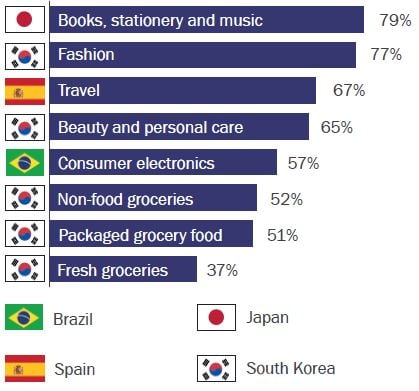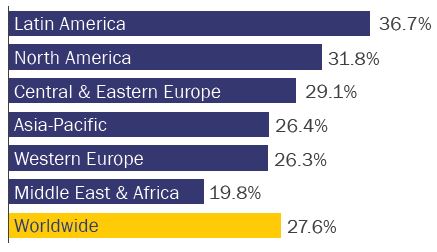Wealth Management: Instant Insights - eCommerce

Investment Insights and Investment & Portfolio Advisory, Wealth Management
Idea in brief: Investing in eCommerce
Bricks to clicks
eCommerce is transforming the retail market as global online sales are set to double from 2017 to 2022 and internet connectivity will reach 3 billion users in emerging markets by 2022.
Disrupting retail
15,500 physical stores closed in the US in 2020, while eCommerce giants continued to make big inroads in fashion, books, travel and consumer electronic sales.
The pandemic changed shopping behaviour
During COVID, online transacting also impacted less conventional eCommerce segments such as food and household categories, which saw its consumer base grow by an average of over 30%.
eCommerce at a glance
The internet has been to retail what steam was to industrialisation in the 19th century, and the COVID crisis has structurally accelerated the reach and adaptation of eCommerce. With the arrival of the pandemic when much of the world came to a standstill, global retail sales fell some -3.5% in 2020, yet eCommerce sales grew by almost 30%, reaching an estimated $4.3 trillion. Driving this growth in eCommerce were emerging markets such as Latin America, Asia Pacific, and Central and Eastern Europe, and North America (see Figure 1).
Despite rapid acceleration, eCommerce still has room to grow. For instance, eCommerce retail sales in the US as a percentage of total sales stood at around 14% in 2020 (adjusted), an indication of the potential to grow.
Figure 1: Retail eCommerce sales growth worldwide
Retail eCommerce sales growth worldwide, by region, 2020 (% change)
Note: Includes products or services ordered using the internet via any device, regardless of the method of payment of fulfilment; excludes travel and event tickets, payments such as bill pay, taxes or money transfers, food services and drinking place sales, gambling and other vice good sales.
Source: eMarketer, December 2020
A trend which will stay post-pandemic
Consumers adapted to the pandemic as it disrupted traditional (offline) shopping channels. These new shopping behaviours will not go away after the crisis. In a global survey, over 75% of consumers in the US and China indicated their intent to incorporate these behaviours going forward.
One of several sectors to have benefited from eCommerce disruption is logistic infrastructure. In the recent past Amazon developed some 9 million square metres of warehouse space in the US, offering Prime customers two-day delivery at no additional cost while operating with a third fewer days of inventory than conventional retailers.
Against this backdrop, it is no surprise that many physical retail stores are closing their doors when bricks become clicks.
eCommerce meets artificial intelligence
Artificial intelligence (AI) is not only increasing network reach, it is also at the heart of customising eCommerce offerings as services become increasingly personalised with the use of big data. By analysing online user traffic, eCommerce giants are able to personalise offers, enhance engagement and increase customer loyalty.
In addition, leading online players are using models powered by AI to predict sales of specific products in certain neighbourhoods and cities, then stocking the predicted amount of inventory in nearby warehouses – thereby boosting inventory-to-sales efficiency.
Figure 2: Global reach
Top country for eCommerce sales by sector (%)

Source: Nielson’s Global Connected Commerce, online purchasing
The future of eCommerce and the internet
Traditional brick and mortar shops are being forced to rethink their strategy by the rise of eCommerce. This is leading to a rise in experiential retail or “retailtainment” for consumers keen on immersive experiences.
Meanwhile, eCommerce businesses continue to capture and shape new retail markets in emerging markets, with an estimated 3 billion potential buyers in emerging markets gaining access to the internet by 2022. New internet connectivity will therefore be a key driver of eCommerce sales over the next decade.
How to invest in eCommerce
With emerging market demographics, increased connectivity, artificial intelligence and automation (Industrial Revolution 4.0), eCommerce remains a durable and long-term investment theme which has been accelerated by the pandemic and the shift to digital.
Yet the growth of eCommerce has fuelled many sectors from warehouse logistics to robotics and automation, as well as spawned a boom in online travel and payment services. This breadth of potential investment opportunities means eCommerce is a more complex area to invest in than may appear at first glance.
With our Investment & Portfolio Advisory team at Rothschild & Co's Swiss Wealth Management business, we can advise on the most appropriate ways of gaining exposure to eCommerce as a longterm investment theme.
